How To Write Positive Or Good Feedback
Writing positive or good feedback is an important skill that can help uplift and motivate others. Whether you're providing feedback to a colleague, employee, or friend, here are some tips to write effective and positive feedback:
-
Start with a positive tone: Begin your feedback on a positive note to set a supportive and encouraging tone. This will make the recipient more receptive to your feedback.
-
Be specific: Provide specific examples of what the person did well. General praise is good, but specific feedback helps the person understand exactly what they did right and encourages them to continue those actions or behaviors.
-
Use the "sandwich" approach: This involves sandwiching constructive feedback between two positive statements. Start with a positive comment, provide the constructive feedback, and end with another positive comment. This approach helps balance the feedback and makes it easier to digest.
-
Focus on strengths: Emphasize the person's strengths and highlight their achievements. Point out areas where they have excelled or made progress. This helps boost their confidence and reinforces their positive qualities.
-
Be sincere and genuine: Authenticity is key. Make sure your feedback is heartfelt and genuine. People can often sense when feedback is insincere or forced, so it's important to be honest and express your true appreciation.
-
Be clear and concise: Keep your feedback clear and to the point. Avoid using vague or ambiguous language. Use simple and straightforward words to convey your message effectively.
-
Use positive language: Choose positive words and phrases to convey your feedback. Instead of saying, "You didn't make any mistakes," say, "Your work was flawless." Positive language creates a more uplifting and encouraging atmosphere.
-
Highlight the impact: Describe how the person's actions or behavior positively impacted the team, project, or organization. Help them understand the value they bring and the difference they make.
-
Offer growth opportunities: Along with the positive feedback, provide suggestions for further improvement or growth. This shows that you believe in their potential and want to support their ongoing development.
-
Encourage open dialogue: Invite the person to discuss their progress, challenges, or any other concerns they might have. This fosters a culture of open communication and shows that you are willing to listen and provide support.
Remember, positive feedback is not just about praising someone—it's also about recognizing their efforts, acknowledging their accomplishments, and inspiring them to continue doing great work.
What is Positive Feedback and Why Does It Matter?
Positive feedback is a communication tool that recognizes, appreciates, and reinforces good performance, behavior, or outcomes. Its purpose extends beyond simple praise:
- Reinforces desired behaviors and encourages their continuation
- Boosts morale and motivation in personal and professional relationships
- Builds stronger connections by showing appreciation and recognition
- Creates a positive culture in workplaces, schools, and communities
- Increases productivity by making people feel valued
- Provides clear examples of what success looks like
- Strengthens retention by making people want to stay engaged
When Should You Send Positive Feedback?
Positive feedback is appropriate in numerous situations:
- After exceptional performance on a project or task
- When someone goes above and beyond their normal duties
- Following a successful collaboration or team effort
- When observing improvement in skills or behavior
- After receiving excellent service from a vendor or service provider
- When a student demonstrates progress or achievement
- Following a helpful interaction with a colleague or peer
- During performance review cycles to document strengths
- When someone demonstrates company values or desired behaviors
- After a positive customer experience you want to acknowledge
- Immediately after the positive action for maximum impact
Who Should Send Positive Feedback?
Anyone can and should provide positive feedback:
- Managers and supervisors to their direct reports
- Colleagues and peers to one another
- Customers and clients to service providers
- Teachers and instructors to students
- Students to educators who made an impact
- Direct reports to their managers (upward feedback)
- Team members to project leaders
- Parents to teachers and coaches
- Community members to volunteers and organizers
- Business partners to collaborators
To Whom Should Positive Feedback Be Addressed?
The recipient depends on the context:
- Directly to the individual who performed well
- To their supervisor or manager to ensure official recognition
- To the entire team when highlighting collective success
- To HR or leadership for significant contributions
- To the person's organization when you're an external party
- To a public forum or review site for service providers
- To academic advisors regarding student performance
- To the appropriate department head in formal settings
- Carbon copy relevant stakeholders who should be aware
Professional Employee Recognition Email
Subject: Outstanding Work on the Q3 Marketing Campaign
Dear Sarah,
I wanted to take a moment to recognize your exceptional work on the Q3 marketing campaign. Your creative approach to our social media strategy resulted in a 45% increase in engagement, well exceeding our initial goals.
What impressed me most was your initiative in researching emerging platforms and your ability to present data-driven recommendations to the leadership team. Your presentation was clear, compelling, and demonstrated deep understanding of our target audience.
Your attention to detail, collaborative spirit, and willingness to mentor junior team members have not gone unnoticed. You've set a high standard for the entire department.
Thank you for your dedication and excellent work. I'm excited to see what you'll accomplish in the coming quarter.
Best regards,
Michael Chen
Marketing Director
Heartfelt Teacher Appreciation Letter
Subject: Thank You for Making a Difference
Dear Mrs. Rodriguez,
I'm writing to express my deepest gratitude for the incredible impact you've had on my daughter Emma this year. As parents, we couldn't have asked for a more dedicated and caring teacher.
Emma used to struggle with reading and often felt discouraged. Your patient approach, creative teaching methods, and genuine encouragement have transformed her attitude completely. She now reads every night before bed and actually asks to go to school on Monday mornings!
Beyond academics, you've taught her kindness, resilience, and the joy of learning. The way you celebrate each child's unique strengths and create an inclusive classroom environment is truly remarkable.
Thank you for going above and beyond every single day. Teachers like you are why education changes lives.
With sincere appreciation,
Jennifer and David Morrison
Casual Peer Recognition Message
Subject: You Absolutely Crushed It Today!
Hey Alex,
Just wanted to shoot you a quick message to say you totally saved the day in that client meeting. When the demo hit that technical glitch, the way you smoothly pivoted to the backup presentation and kept the client engaged was impressive.
Your quick thinking and calm demeanor turned what could've been a disaster into a win. The client was still smiling when they left, and that's all because of you.
Seriously, thanks for having the team's back. Drinks on me next happy hour!
Cheers,
Jordan
Formal Customer Service Recognition Letter
Subject: Commendation for Exceptional Service
To Whom It May Concern,
I am writing to formally commend James Patterson, one of your customer service representatives, for the outstanding assistance I received on December 3rd regarding my account issue (Case #45678).
Mr. Patterson demonstrated exceptional professionalism, patience, and problem-solving skills throughout our interaction. He listened carefully to my concerns, explained the resolution process clearly, and followed up promptly to ensure my issue was completely resolved.
In an era where customer service often falls short of expectations, Mr. Patterson's dedication and competence stand out remarkably. He is clearly an asset to your organization.
I hope this feedback reaches his supervisors and is included in his performance record. Employees of this caliber deserve recognition and appreciation.
Sincerely,
Robert Williams
Customer ID: CX-991234
Simple Thank You Email for Helpful Colleague
Subject: Thanks for Your Help!
Hi Monica,
I just wanted to say thank you for walking me through the new expense reporting system yesterday. I know you're busy with your own deadlines, and I really appreciate you taking the time to help me.
Your explanations were so clear, and now I feel confident using the system. You're a great teammate!
Thanks again,
Kevin
Professional Vendor Appreciation Email
Subject: Appreciation for Outstanding Partnership
Dear Ms. Thompson,
I wanted to reach out to express our company's appreciation for the exceptional service your team has provided throughout this year. Your responsiveness, quality of work, and commitment to meeting our tight deadlines have been instrumental to our success.
The recent product launch would not have gone as smoothly without your team's flexibility and problem-solving abilities. When we encountered unexpected challenges, you responded immediately with creative solutions that kept us on track.
We value our partnership with your organization and look forward to continued collaboration. Your professionalism sets the standard for vendor relationships.
Thank you for your outstanding work.
Warm regards,
Patricia Lee
Director of Operations
Apex Solutions Inc.
Upward Feedback Email to Manager
Subject: Thank You for Your Leadership
Hi Rachel,
I wanted to take a moment to let you know how much I appreciate your leadership, especially during this quarter's challenging project timeline.
Your clear communication about priorities, willingness to run interference with other departments, and trust in our team's abilities made all the difference. The way you advocated for additional resources when we needed them showed you really understand what we're dealing with on the ground.
I also appreciate how you've created an environment where we feel comfortable sharing ideas and concerns. That openness has made our team more effective and makes coming to work more enjoyable.
Thank you for being an excellent manager. It doesn't go unnoticed.
Best,
Daniel
Team Recognition Email
Subject: Incredible Work, Team!
Hi Everyone,
I wanted to recognize the absolutely fantastic job you all did on the product launch last week. This was a massive undertaking, and every single person on this team contributed something valuable.
From design to development, from QA to documentation, from marketing to customer support—each department brought their A-game. The coordination and collaboration I witnessed were exemplary.
Special shoutout to everyone who worked late nights and adapted to last-minute changes without complaint. Your dedication and positive attitudes made this success possible.
We should all be proud of what we accomplished together. Celebrate this win—you've earned it!
Thank you all,
Lisa Nguyen
Project Director
Student Encouragement Email
Subject: Great Progress This Semester
Dear Marcus,
I wanted to reach out to acknowledge the significant improvement you've made in your coursework this semester. Your recent essays have shown much stronger critical thinking and your analysis has become more nuanced and sophisticated.
I'm particularly impressed by your participation in class discussions. Your willingness to ask questions and engage with complex ideas demonstrates real intellectual curiosity.
Keep up the excellent work. I'm confident you'll continue to grow as a scholar.
Best wishes,
Professor Anderson
How to Write Effective Positive Feedback
Follow this process for maximum impact:
- Be timely - Send feedback as soon as possible after the positive event
- Be specific - Include concrete examples rather than vague praise
- Explain the impact - Describe how their actions made a difference
- Make it personal - Address the individual by name and tailor your message
- Be genuine - Only give feedback you truly mean
- Focus on actions and behaviors - Highlight what they did, not just who they are
- Connect to values or goals - Show how their work aligns with larger objectives
- Keep appropriate tone - Match formality to your relationship and context
- Proofread carefully - Errors undermine your message
- Consider the delivery method - Email, letter, in-person, or public recognition
Requirements and Prerequisites Before Sending
Ensure these conditions are met:
- You have accurate information about what the person accomplished
- You have permission to share feedback if going to supervisors
- The accomplishment is noteworthy and deserves recognition
- Your timing is appropriate - not during a crisis or negative situation
- You have the standing to provide this feedback
- The person is open to receiving recognition (some prefer privacy)
- You've documented specific examples to include
- You know the preferred communication channel of the recipient
- You're aware of organizational protocols for formal recognition
- You've checked facts and figures if including metrics
Formatting Guidelines for Positive Feedback
Structure your message effectively:
- Length: 150-400 words for most situations; longer for formal commendations
- Tone: Professional yet warm; adjust based on relationship
- Structure: Opening statement, specific examples, impact description, closing appreciation
- Subject line: Clear and positive (avoid generic "Great job")
- Greeting: Use recipient's name and appropriate title
- Opening: State your purpose immediately
- Body: Provide 2-3 specific examples with context
- Closing: Reiterate appreciation and express confidence
- Signature: Include your name, title, and contact information for formal letters
- Format: Use paragraphs, not bullet points, for warmth
- Delivery: Email for routine feedback, letter for significant recognition
Elements and Structure of Positive Feedback
Include these components:
- Clear subject line that indicates positive content
- Personalized greeting using the recipient's name
- Immediate statement of purpose - why you're writing
- Specific examples of what they did well (2-3 instances)
- Context and impact - why it mattered and what resulted
- Connection to larger goals or values when relevant
- Acknowledgment of effort or skills demonstrated
- Expression of gratitude or appreciation
- Forward-looking statement showing confidence in continued success
- Professional closing appropriate to your relationship
- Complete signature block with title and contact details for formal letters
- Optional: CC relevant stakeholders who should be aware
After Sending Positive Feedback
Take these follow-up actions:
- No response required - Positive feedback doesn't demand a reply
- If in person, allow acknowledgment - Give them space to respond naturally
- Document for performance reviews - Save copies for formal evaluations
- Follow through on promises - If you mentioned rewards or opportunities, deliver them
- Watch for impact - Observe whether the behavior continues
- Share with appropriate parties - CC supervisors or HR when warranted
- Continue the recognition - Don't make it a one-time event
- Avoid immediately asking for favors - Don't undermine genuine appreciation
- Be consistent - Recognize others who deserve it too
- Reference it later - Remind them of their strengths when relevant
Common Mistakes to Avoid
Watch out for these pitfalls:
- Being too vague - "Good job" without specifics has little impact
- Delaying too long - Feedback loses power over time
- The feedback sandwich - Don't pair positive feedback with criticism
- Backhanded compliments - Avoid "You did well for someone with your experience"
- Making it about you - Focus on them, not how their work helped you
- Comparison to others - Don't say "better than John"
- Excessive praise - Hyperbole feels insincere
- Generic templates - Personalization matters
- Public recognition for private people - Know their preferences
- Forgetting to copy supervisors when appropriate
- Conditional praise - "Great work, but next time..."
- Taking too long - Keep it concise and focused
- Grammatical errors - Proofread carefully
Advantages and Disadvantages of Positive Feedback
Advantages:
- Increases motivation and engagement significantly
- Reinforces desired behaviors and performance standards
- Builds stronger professional and personal relationships
- Creates positive work culture and improves morale
- Costs nothing but time and attention
- Improves retention and reduces turnover
- Encourages continued excellence and improvement
- Provides documentation for promotions and raises
- Makes people feel valued and appreciated
Disadvantages:
- Can feel insincere if not genuine or specific
- May create jealousy if others aren't recognized equally
- Takes time to craft thoughtfully
- Could inflate egos if excessive or undeserved
- Might set unrealistic expectations for future performance
- Can be uncomfortable for people who dislike attention
- May lose impact if overused or routine
Comparing Positive Feedback to Alternatives
Positive Feedback vs. Constructive Criticism:
- Feedback focuses on strengths; criticism addresses improvements
- Feedback motivates; criticism corrects
- Both are necessary for growth and development
Public Recognition vs. Private Acknowledgment:
- Public recognition motivates teams but may embarrass some individuals
- Private feedback feels more personal and intimate
- Know recipient's preferences before choosing
Formal Commendation vs. Casual Thanks:
- Formal letters create official records for careers
- Casual messages build day-to-day relationships
- Significant achievements deserve formal recognition
Monetary Rewards vs. Written Recognition:
- Money is appreciated but doesn't replace verbal acknowledgment
- Recognition often has longer-lasting motivational impact
- Combine both when possible for maximum effect
Immediate Verbal Praise vs. Written Feedback:
- Verbal is spontaneous and personal
- Written provides lasting documentation
- Use verbal immediately, follow with written for important achievements
Tips and Best Practices
Maximize the impact of your positive feedback:
- The 5:1 ratio - Aim for five positive interactions for every critical one
- Be prompt - Feedback within 24-48 hours is most effective
- Use the person's name multiple times for personal connection
- Include metrics when available to show concrete impact
- Tell a story - Context makes feedback memorable
- Make it proportional - Match enthusiasm to achievement
- Recognize effort, not just results - Acknowledge hard work even in failure
- Be consistent - Regular recognition is more powerful than rare grand gestures
- Vary your approach - Don't use the same template repeatedly
- Copy their boss when appropriate for career benefit
- Reference past successes to show you remember their contributions
- Ask what they learned to extend the positive conversation
- Share with the team when individual success helps everyone
- Keep a recognition calendar to ensure fairness across team members
Frequently Asked Questions
How often should I give positive feedback? As often as warranted - there's no maximum. However, ensure it remains genuine and specific rather than routine.
Should I always copy someone's manager? For significant achievements, yes. For routine good work, direct feedback is sufficient. Use judgment based on organizational culture.
What if the person dismisses the compliment? Respect their humility but reinforce that the recognition is deserved. Some people need time to accept praise.
Can positive feedback be given anonymously? While possible, it's less impactful. Knowing who appreciates them adds meaning and builds relationships.
Is it appropriate to give positive feedback to superiors? Absolutely. Upward feedback strengthens relationships and helps managers understand their impact.
How detailed should examples be? Include enough detail to show you paid attention, but stay concise. Two to three sentences per example is ideal.
Should I mention any areas for improvement? No. Keep positive feedback purely positive. Address improvements separately at another time.
What if I'm not good at expressing emotions? Focus on specific facts and observations. Genuine specificity matters more than emotional language.
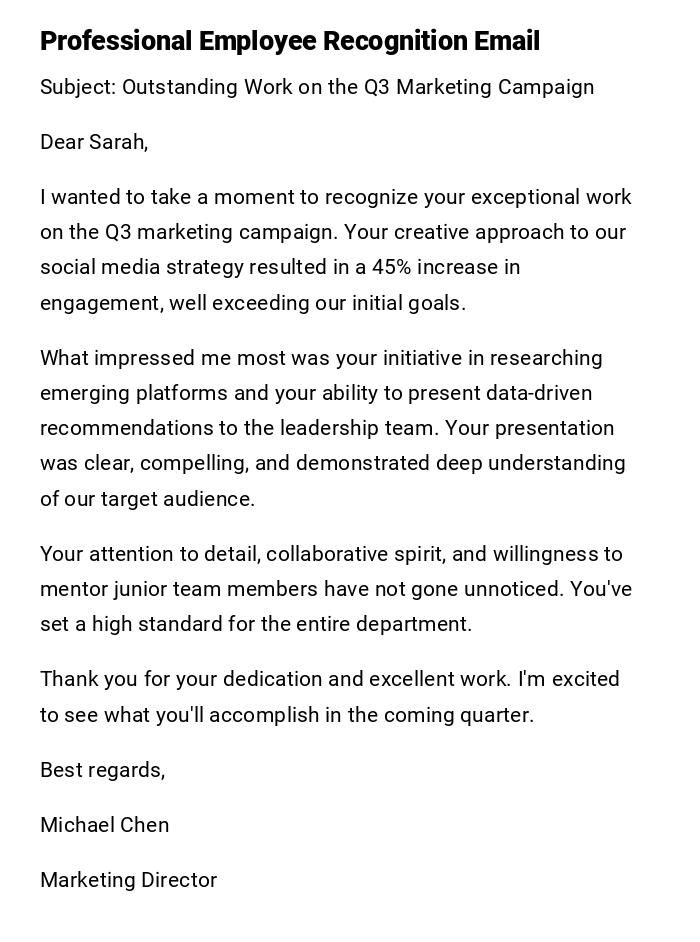
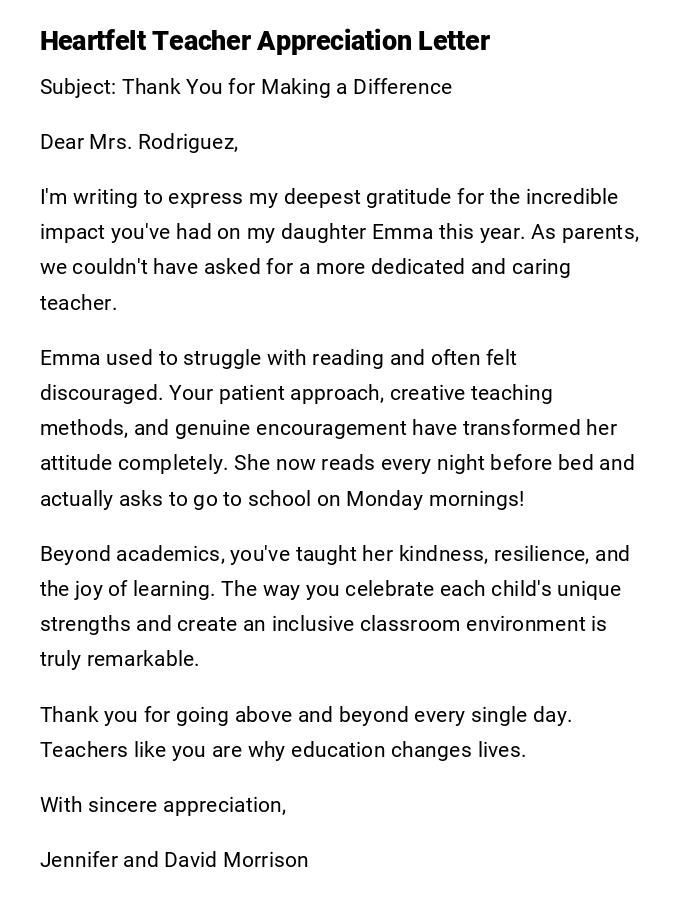
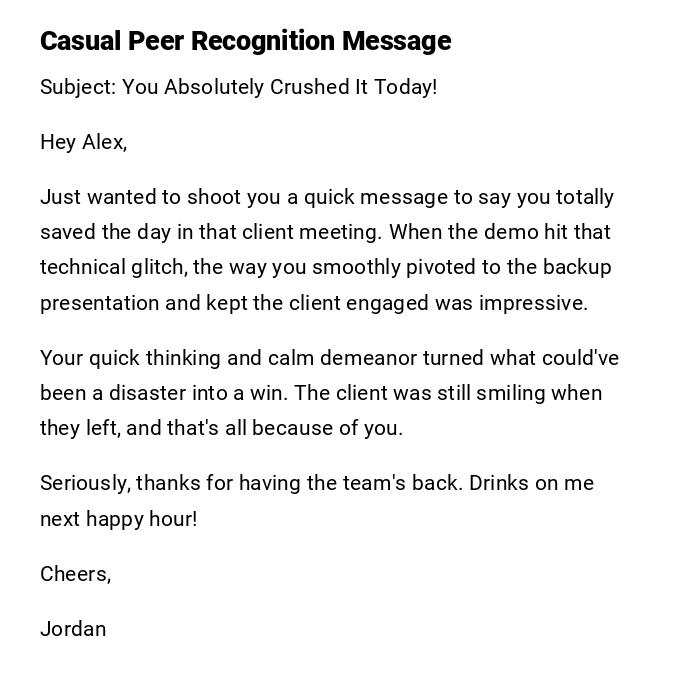
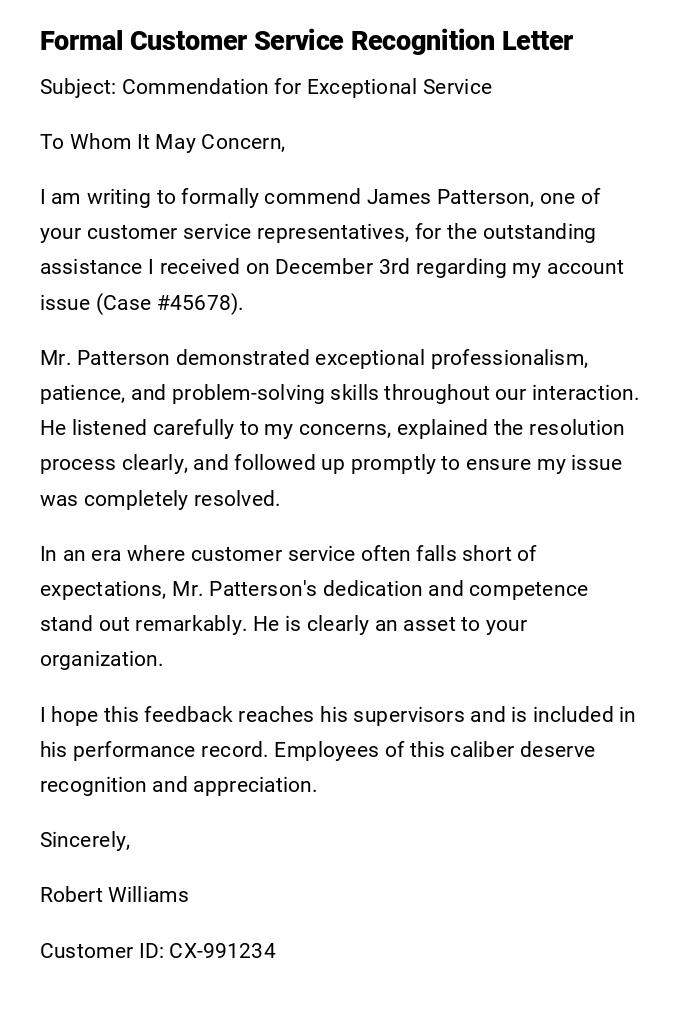

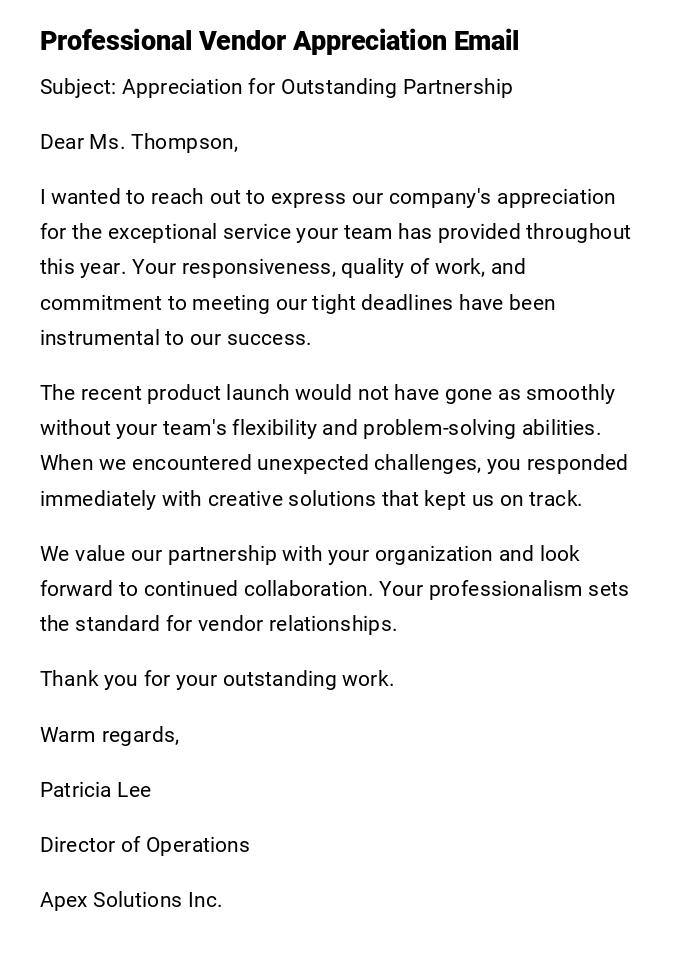
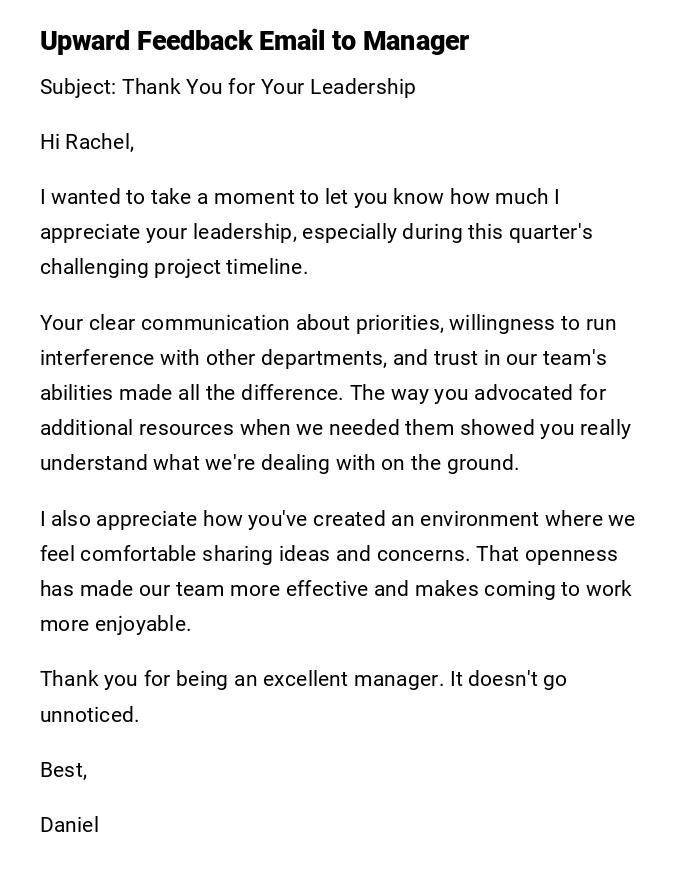
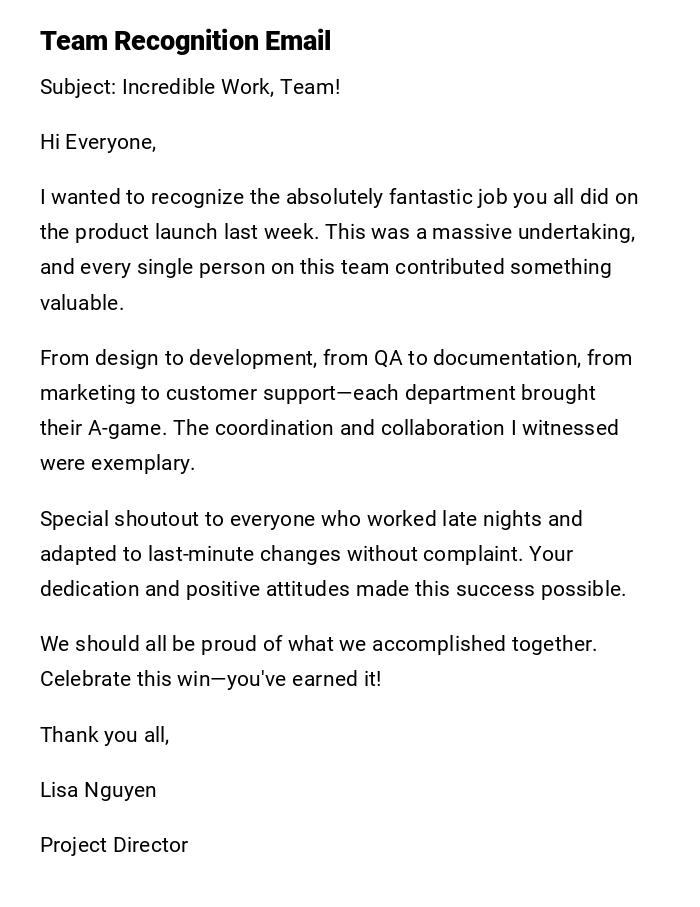
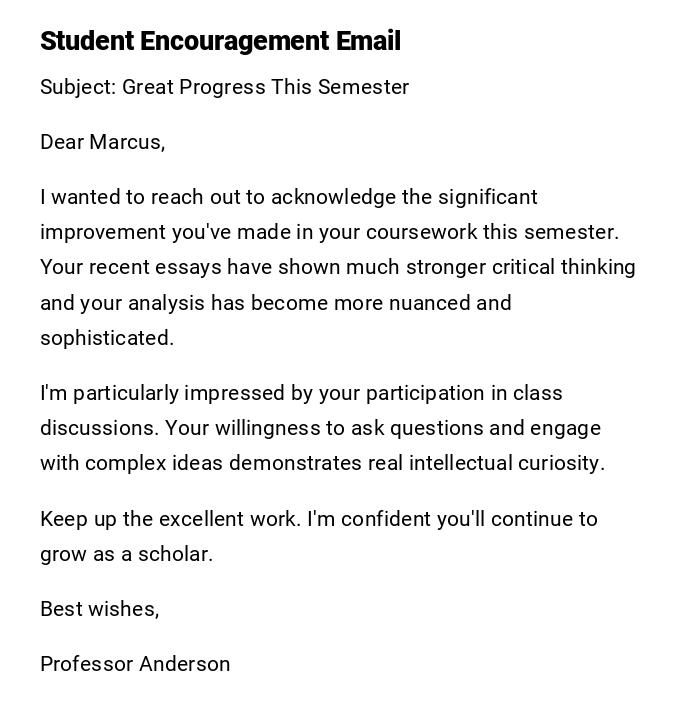

 Download Word Doc
Download Word Doc
 Download PDF
Download PDF